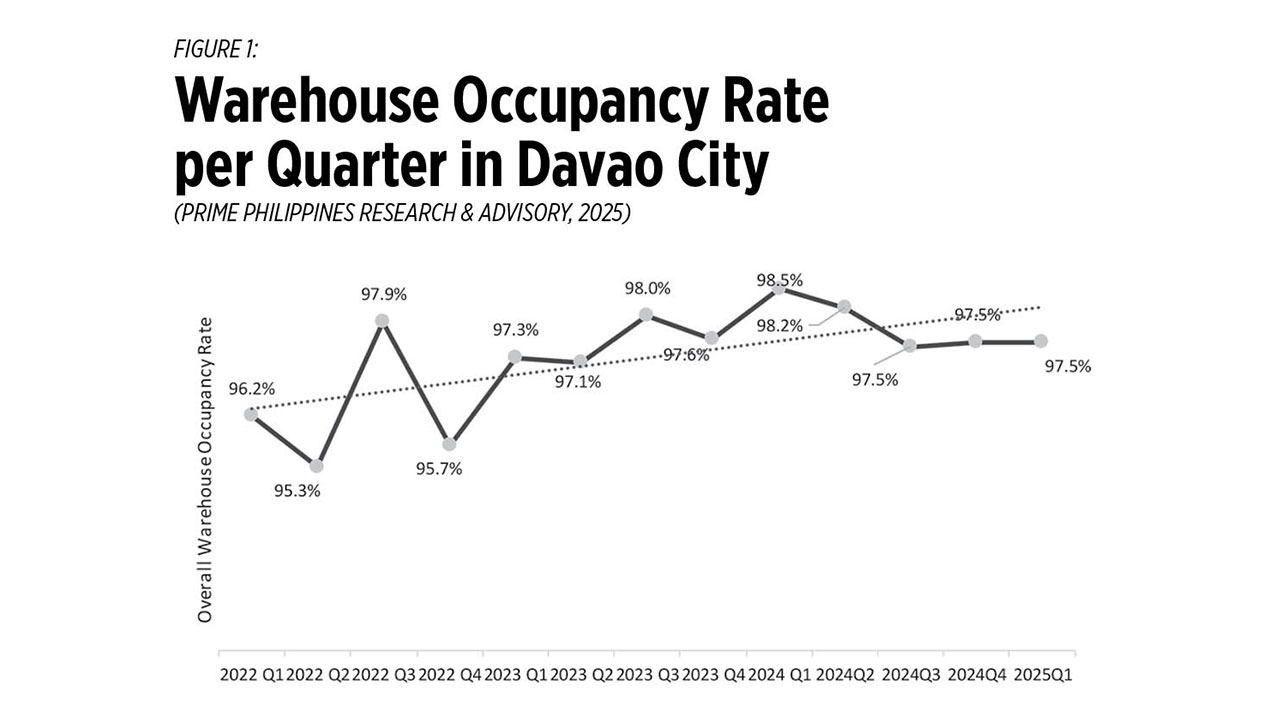
Realty Check
By Jet Yu

The Metropolitan Davao Development Authority (MDDA) was established in 2022 under Republic Act No. 11708 to coordinate development, infrastructure, and public services across 15 local government units (LGUs) in the Davao Region. Modeled after the MMDA but operating at a broader, multi-province scale, the MDDA formalizes what was once a loosely coordinated urban cluster into a single metropolitan region focused on harmonizing planning, investment, and service delivery.
With jurisdiction over six cities and nine municipalities, the MDDA brings coherence to a rapidly expanding regional cluster
To appreciate the scale of this task, the MDDA spans six cities and nine municipalities — including Davao City, Tagum, Panabo, Samal, Digos, and Mati — covering 6,492 square kilometers and serving over 3.3 million people. Its mandate includes land use integration, transport management, disaster response, zoning, and environmental coordination. Governed by a council of provincial governors, city mayors, and national agency representatives, the MDDA is positioned as a unifying force rather than a loose coalition of LGUs.
P3.4 billion in 2024 investments underscore economic confidence in Metro Davao
This governance framework becomes even more essential amid rising investor confidence. In 2024, Davao City attracted P3.4 billion in new investments, with P237 million recorded in early 2025. These inflows target sectors like logistics, digital services, manufacturing, and agribusiness — industries that depend on reliable infrastructure and coordinated regional policies. Without a central body like the MDDA, such momentum risks being undermined by fragmented planning.
Davao City faces exceedingly high demand for both warehousing and office spaces
This investment momentum is mirrored in Davao’s blossoming warehouse and office sectors. In 2024 alone, over 100,000 square meters worth of warehousing space were sought, with occupancy rates trending upward — driven by sustained demand from e-commerce, logistics providers, and light manufacturing. This surge in requirements is now being met with a growing pipeline of projects, particularly concentrated in the northern districts of Davao City such as Tibungco, Panacan, and Mahayag.
In contrast to Metro Manila, Metro Clark, and Metro Cebu, Davao City also sustained a strong office occupancy rate of 92% in 2024. Both expanding local firms and new market entrants are actively competing for limited space — particularly prioritizing Grade A, PEZA-accredited offices — underscoring tightening conditions in the city’s commercial real estate market.
Davao Region completed more than 740 infrastructure projects from 2021 to 2024
Metro Davao made strides in infrastructure even before MDDA’s full activation. Between 2021 and 2024, over 740 projects — roads, bridges, public facilities, irrigation, and waste systems — were completed through partnerships among LGUs, national agencies, and development partners. These accomplishments provide a strong foundation for the kind of institutionalized, multi-sector coordination that the MDDA is built to scale.
More transformative infrastructure advancements are underway for Davao
Now, Metro Davao is entering a new phase of growth marked by ongoing high-impact infrastructure. The Davao City Bypass Road Project — a 45.5-kilometer corridor featuring the country’s first long-distance twin-tube mountain tunnel — is set to reduce travel time between Toril, Davao City (Davao del Sur) and Panabo (Davao del Norte) from 1 hour and 44 minutes to just 49 minutes. Meanwhile, the 4.76-kilometer Samal Island–Davao City Connector (SIDC) Bridge — designed to accommodate over 25,000 vehicles daily — will establish the first permanent land link between Davao City and Samal Island, enhancing connectivity for both tourism and commerce.
Metro Davao’s 2045 master plan will crystallize a unified pipeline of development initiatives
These projects are part of a broader long-term vision. The Metropolitan Davao Sustainable Urban Development Master Plan (2025–2045), developed by NEDA Region XI and JICA, is structured for MDDA-led implementation. It integrates land use, housing, environmental safeguards, and infrastructure into a coherent strategy. Projects such as the Mindanao Railway, Davao Mega Harbor Reclamation, and Sasa Port Modernization support trade and economic clustering. Metro Davao’s location along the Davao Gulf — linking it to the BIMP-EAGA corridor — makes alignment even more critical.
To realize its geographic advantage, Metro Davao must prioritize upgrades alongside new infrastructure
However, seizing this strategic position also requires addressing longstanding infrastructure gaps. Sasa Port, Davao International Airport, and Mati Airport still operate with outdated systems, constraining efficiency. The MDDA can provide the coordination needed to prioritize and sequence these upgrades, ensuring that improvements are timely, aligned, and regionally beneficial.
Momentum is building — execution will be the turning point
In this context, the MDDA represents more than a bureaucratic step — it is a strategic shift toward regionally aligned governance. Yet nearly three years since its creation, key appointments, funding, and operational structures remain pending. Despite this, the groundwork — through infrastructure projects, investment flows, and a unified master plan — is firmly in place. The opportunity now lies in execution: for the MDDA to become the authority that ensures Metro Davao’s growth is not only accelerating, but also cohesive, inclusive, and sustainable.
Jet Yu is the founder and chief executive officer of PRIME Philippines, a commercial real estate advisory firm.